#Triangle-shaped-architecture
Explore tagged Tumblr posts
Text
k i’ve consulted with my former-architecture-student dad and he’s gonna help me solve the issue but also he’s never made anything with clay in his life so i AM gonna have to get some air dry stuff so we can make test versions and he can get a sense of how clay works as a material
#everyone else in my class is doing rounded/organic shapes#but when i was at school our ONE ceramics project was called ‘organic form’ so like. i’ve DONE that.#and i want to go wayyy more modern and angular and. well. architectural.#but that means i’ve got nobody else to like… work with and bounce ideas off bcus they’re all like… making beautiful leaf-shaped bowls etc.#they aren’t dealing with endless triangles the way i am
1 note
·
View note
Text
Writing Notes: Art Deco
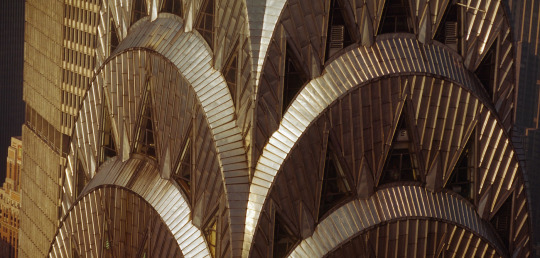
Art Deco - a style of decor and architecture that peaked in international popularity in the 1920s and 1930s and includes modern design elements combined with sophisticated craftsmanship.
The design movement is further characterized by geometric shapes and a bold color palette; the use of metals or metallic details; glam fabrics with patterns; and figures from Greek and Roman mythology.
Depending on the geography and time period referenced, it can vary widely.
While early styles were bursting with often clashing colors, the Great Depression ushered in a more minimalist approach and muted some of the excesses of the initial art deco designers.
The deco era has experienced a resurgence in recent times, thanks in part to Hollywood films that heavily feature the aesthetic, such as Chicago (2002) and The Great Gatsby (2013).
Elements of Art Deco Decor Design
Art deco decor and architecture can vary, but here are some of the characteristics practically synonymous with the style of the deco period, today considered to be somewhat retro in style.
Geometric shapes: Key art deco elements include geometric designs such as sunbursts, which are sometimes deconstructed into circles and triangles; zigzag patterns, which may vary from stacked chevrons to houndstooth patterns; and scalloped patterns, which combine aspects of both sunburst and zigzag shapes. For example, a screen meant to divide a dining room from a living room may feature rounded, scalloped curves at the top instead of flat edges.
Bold colors: Bright colors are characteristic of the art deco style, sometimes appearing in clashing combinations but always in vivid, gemstone hues, such as in colored glass in a sconce or chandelier, or in color-saturated wall decor that draws the eye.
Mythological figures: Figures from Greek and Roman mythology, or heavily mythologized modern stand-ins, feature prominently in art deco interior design, such as posters, light fixtures, and other objects. Art deco artists also flourished in the medium of sculpture, and some of the most enduring symbols of the style are found in sculptures in major cities around the world.
Various metals: Exterior art deco architecture and designs favor the use of chrome and stainless steel, especially in combination with concrete. Smaller works, such as a table lamp, may feature intricate inlays of more precious metals. In the absence of actual metal, art deco styles may include materials or visual elements intended to appear metallic in nature.
Luxurious, patterned fabrics: Art deco furniture upholstery usually features expensive or expensive-looking fabrics and brightly colored geometric patterns to further indicate opulence.
Lacquers and inlays: Finishing touches like a glossy lacquer on a counter or an exquisite, patterned inlay—made of expensive materials like gold or ivory—are representative of art deco in that they are at once sleek and modern while also showcasing a high degree of craftsmanship. Lacquered elements can appear on stools, side tables, coffee tables, or any surface where they will be admired and enjoyed.
A Brief History of Art Deco
Art deco decor and architecture first emerged early in the 20th century, but the style is still popular today.
Emergence in France: Art deco (arts décoratif in French) first appeared in France around the time of World War I, which began in 1914. Art deco was a reaction to the preceding art nouveau period (characterized by intricate, swirling designs)—an effort to bring back elements of traditional art and combine them with modern materials and craftsmanship. The style reached its peak at the 1925 Decorative Arts Exposition in Paris and dominated architecture and interior design ideas around the world.
Divergence of styles: By the late 1920s, the art deco look had split into two different schools of thought and style. The traditionalists wanted to pair the modern forms of home decor and architecture with traditional craftsmanship; the modernists embraced new materials, new technology, and mass production in favor of a more streamlined approach to design.
Emergence in New York: Art deco architecture and visual arts is closely associated with the city of New York, one of the cities where the style first appeared in the United States during the ’20s and flourishing into the 1930s. New York still has many skyscrapers and other examples of art deco architecture, such as Rockefeller Center, the Chrysler Building, and the Empire State Building.
Embrace around the world: Major international cities welcomed art deco design elements into their own decor, art, and architecture, and you can see examples of this style in mosaics, sculptures, and buildings in Brussels, Bucharest, Chicago, London, Mexico City, Miami, Moscow, Rio de Janeiro, Tokyo, and other cities.
Source ⚜ More: Notes & References ⚜ Writing Resources PDFs
#art deco#art#writing notes#worldbuilding#writeblr#writing inspiration#writing ideas#light academia#writers on tumblr#writing reference#architecture#literature#spilled ink#dark academia#writing prompt#history#design#creative writing#writing resources
117 notes
·
View notes
Text
In memory of Grey Card's Top Five, my pick's for 2024
This year, 2024, my interest in taking photos of common objects was reinvigorated, and that was due, in great part, to the small point and shoot, the Sony RX100 vii, which I bought in August. I also continued my exploration of portraiture and flower photography, and worked on my color photography, but it was the following 5 B&W images that I think highlight new ways I am refining my photographic aesthetic and expressing my love for this art form.
So, here goes my 2024 Top 5.
Below is one of my first photos made with that little camera. I think this photo is simple yet striking, in part because there is very little detail about what the object is but a lot of detail about how I saw it and what drew me to create some photos of it. OK, it is one of several of my desk chair I made that I liked enough to share. That post can be found here.

Love that little camera, the RX100 vii. Here is one of my favorite photos I took with it. You can find that post here.
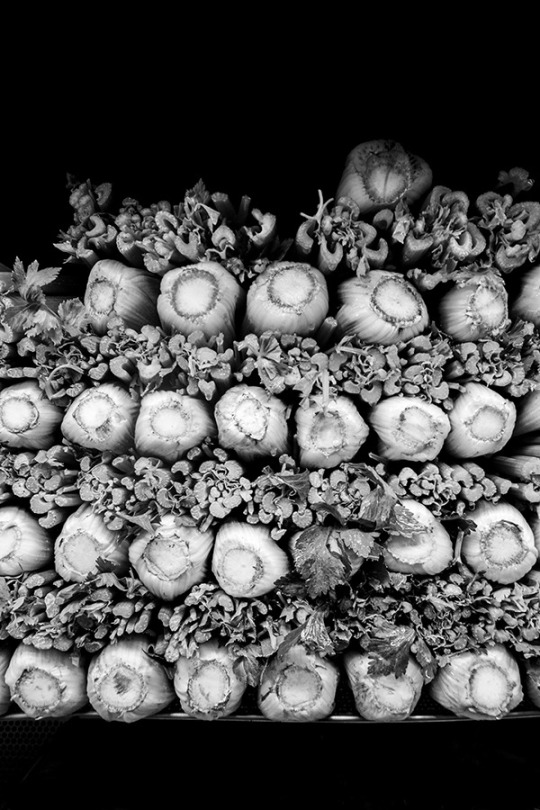
I recall seeing this trash receptacle in Oakland and being drawn into the patterns I saw: the very angular and strictly layered folds of the metal door; the angular and flat-surfaced container itself, with the repetitive patterned lid, open and angled so that the edge of the opening of the container and the lid formed a triangle that cut across the layered metal door; the wildly sprayed graffiti that carelessly disrupted the angles and layers of lines; and the container's rectangular shadow that served as a base for the chaotic mix of manufactured perfection and anarchic fun and self-expression. This post can be found here.
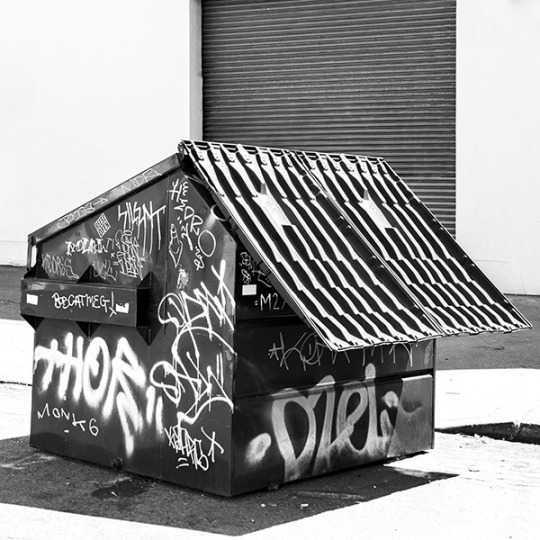
Ah, and then there is the bunch of photos I made of this gorgeous architectural masterpiece. It was difficult selecting just one to share here, but this is it. This was designed by the late, great Zaha Hadid, a master of elegant form and fluidity. This post can be found here.
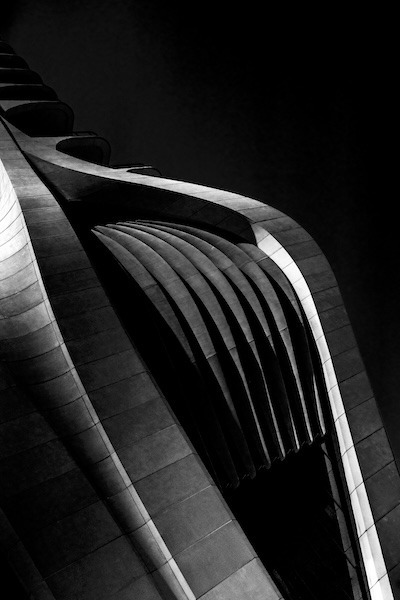
And finally, here is a photo of an older building, but very much in my aesthetic style that captures modern architectural structures' contrasts and shapes and lines (OH MY!) in B&W. This is part of my ongoing exploration of forms and contrasts that attract my attention and fuel my imagination. That post can be found here,
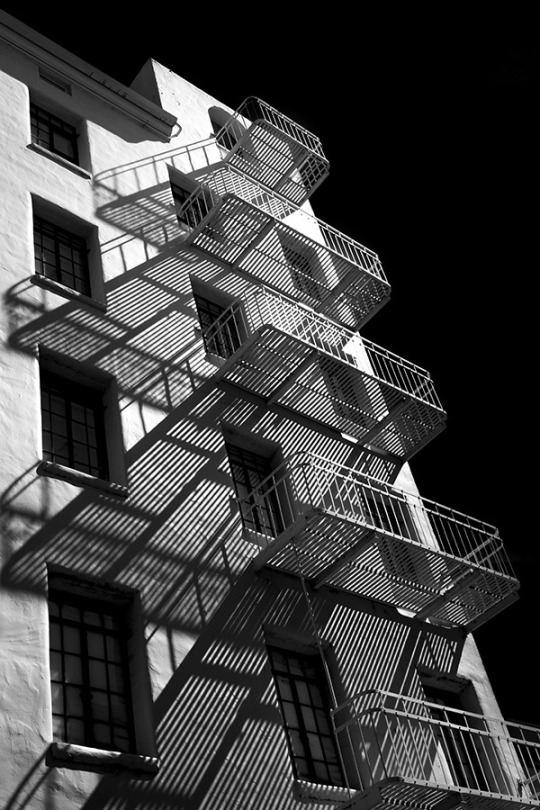
So, this ends another year of photographic growth and wonder.
I am grateful to our strong Tumblr original photographer community for the ongoing source of inspiration your work shared on here provides me and others. You'll feed my artistic soul so that my photography can soar and take my soul on flights of seeing that still amaze me.
Thank you.
The adventure continues...
88 notes
·
View notes
Text
grandkids of Finwë + what kind of artwork they did as small kids:
Feanorians:
Maedhros: extremely proper drawings with green grass, blue sky, one yellow tree and one white tree. Elves with the right numbers of fingers and toes. Very particular about getting everyone's eye colors right.
Maglor: lots of swirls and bright globs of paint just because, big believer in making everything purple because he likes purple. Suffers Maedhros repeatedly 'correcting' his artwork to be the 'right' colors and shapes. As he gets older he becomes interested in telling a story and often draws comics/sequences. These are kind of rushed; he is more interested in conveying a point than the art itself.
Celegorm: loud scribbles of guys with extremely cool hunting bows wearing really bright outfits. Usually a minimum of two tigers/drawing.
Caranthir: prefers coloring in pictures to drawing his own. Likes subject matters he feels he is 'good' at; flowers, snakes, trees.
Curufin: very into designing and coming up with ideas even as a small child. Likes to both draw on and copy Feanor's work. As he gets older, big into costume design and jewelry diagrams.
Amras: animals animals animals animals. Bright and huge and labelled. Not particularly precise about giving everything the right number of eyes and feet.
Amrod: likes to write his name in Tengwar bubble letters. Also precise about using the 'right' colors. Often draws what he thinks his mom would approve of/praise rather than his own interests; a lot of clay sculptures, drawings of people.
Nolofinweans:
Fingon: his paper is full filled to the brim because he kept thinking of things he wanted to add to the drawing. "What are you working on?" "This is dad and two horses and a very big lizard and eight blooming flowers and half of a lion." Extremely enthusiastic about gifting his art to people. Wants to draw on himself.
Turgon: precise sharp drawings of buildings and carriages. Very advanced for his age in terms of recognizing aspects of architectural design; does not draw people at all until he's the elf equivalent of around 8. Often trades off with Fingon (by then quite a bit older) where he will draw buildings and carriages and then Fingon will add in the people and horses.
Aredhel: draws the bare minimum she might before going to play outside. Eventually gets into drawing buried treasure maps and floral sketches.
Arafinweans:
Finrod: perfectionistic as a child, to the point where he often starts over the same drawing 4x times. Likes to draw flowers, animals, eyes. Often mixed media, and fond of collages. Likes to trace and copy several times before trying things on his own.
Orodreth: draws extremely small in the corner of the page. Makes a lot of little animal and elf characters.
Angrod: Likes to cut and glue. Has Finrod cut out his drawings to make them into puppets and toys. Fond of sticking leaves and book-pages onto his art. Also big on drawing on himself.
Aegnor: really into shapes. He will draw people, animals, etc if he's in the mood but he's most fond of brightly colored triangles and circles. Likes to copy letters; really nice handwriting for his age.
Galadriel: Advanced, as she is with everything. Likes to draw elves out doing different activities; hunting, dancing, playing. Their faces are expressive and a little creepy. Also a fan of everything being the 'right' hue.
133 notes
·
View notes
Text


This 1975 fixer upper in Shelton, WA used to be an art/pottery studio & home on Harstine Island in the middle of Puget Sound, so it's a great location. Has 2bds, 2ba, and lots of potential. Asking $595K. I like it, see what you think.

So, it's a little weather beaten on the exterior. I wonder if that's some of the pottery they made.
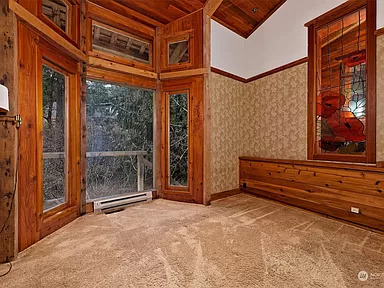
If you're a wood lover, you'll be into this house. The carpet isn't bad, but that wallpaper would have to go. It's too dull for my taste.
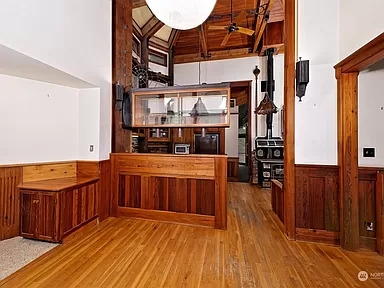
Very unusual architecture. The interior really isn't that bad. This wood looks to be in good shape.
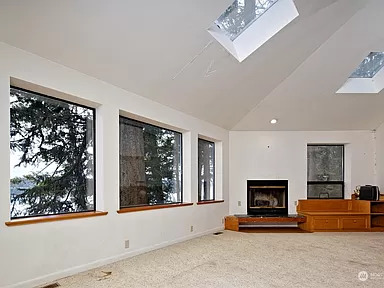
Large living room with a modern fireplace. The walls and ceiling look new with lovely skylights. Big windows provide a beautiful view of the sound.

Look at this fabulous feature. Love this.

I like the kitchen, it's different and has a great work triangle setup. I would just give the cabinets a light sanding and a couple of coats of polyurethane. The floor needs some TLC, too.
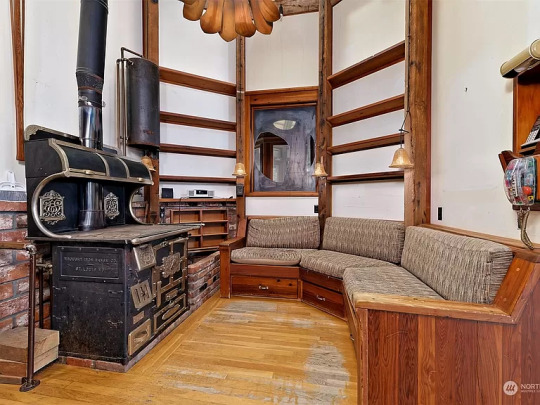
How cool is this? Look at that stove. The floor is worn so it looks like they spent a lot of time here. I don't blame them, it's cozy AF. All it needs is some new cushions and covers.

The back door- the hall has a lof of space for coats and stuff.
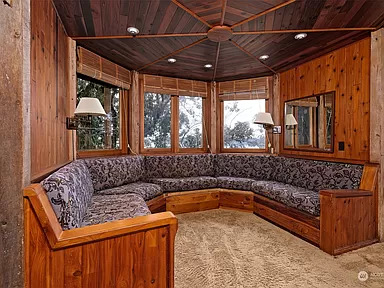

How gorgeous is this 2 story library? All it needs is a new set of cushion covers.
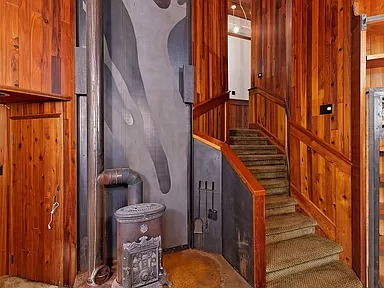
Cute little wood stove by the stairs.

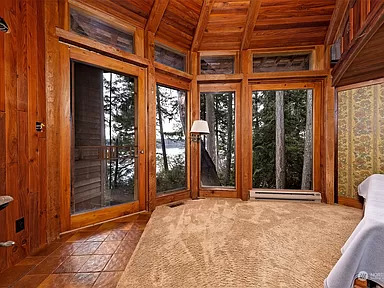
Primary bedroom has built-ins and a big window w/a great view.

Nice closet/dressing area.
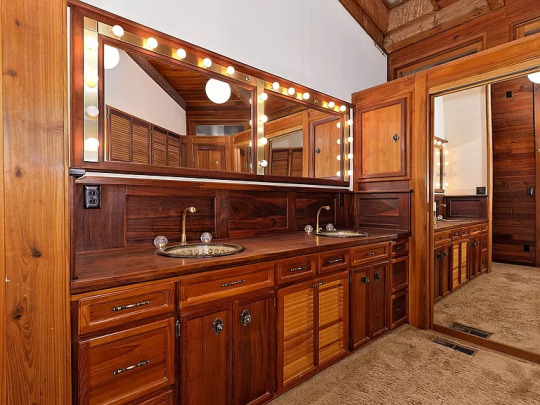
Large en-suite has vintage double sinks. This house is not bad inside, you could give it a good cleaning and live here while you do the work.

Sunken tub and shower. Look at the little door above the tub.

Check this out, a water closet with a marble top sink and interesting toilet.

There are decks all around the house, and here's a large one over the carport. Now let's have a look at the studio.
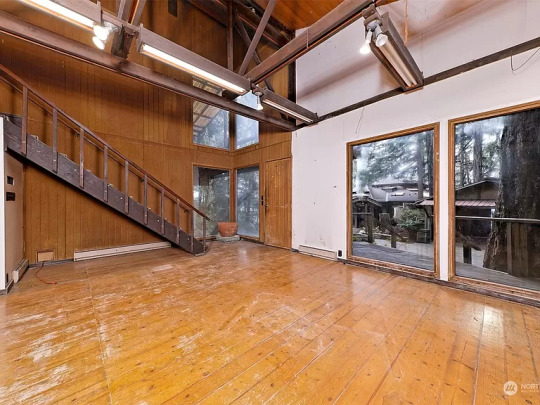

Oh, wow, this is huge.
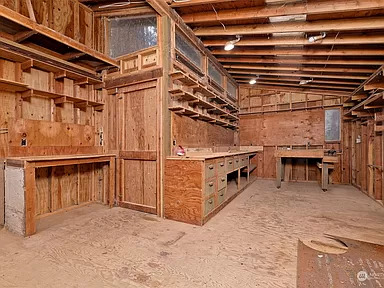
This is fabulous.
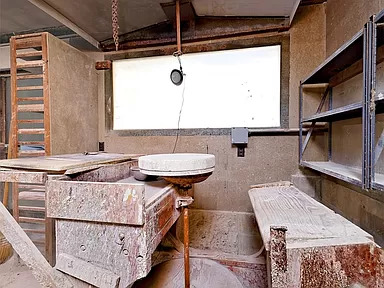
Look, they left the pottery wheel and the area where they do the clay. So cool.

Upstairs in the loft. This has potential. It could be made into an apt. for an artist.

The banks of the Puget Sound.

This is how close it is to the water.

2.13 acre lot. Does this mean that you own part of the water in the sound?
https://www.zillow.com/homedetails/970-E-Maples-Rd-Shelton-WA-98584/60923977_zpid/?
391 notes
·
View notes
Text
Thoughts on the new images of the Lighthouse Part 1. DA:TV spoilers under cut.
[Link to Part 2]
general: the Lighthouse looks so cool, it's beautiful 🥺 I can't wait to explore it fully and see the companions' areas change over time.
outside many of the windows are pieces of floating rock and odd architecture, a feature of Fadey scenery.

This can only be Emmrich's room. :) the giant skeleton statue on the left is exactly like the ones in the Necropolis Halls. the hanging lanterns have hexagon shapes, which I've become convinced is part of Nevarra's visual design in this game. the slab-like table in the foreground looks suspiciously like it's meant to hold a corpse/skeleton, and we can see Emmrich doing just that here. the room is filled with lots of flasks and other glass vessels, reminding me of the artbook concept of apron!Emmrich holding a smoking glass flask. I wonder if any of the jars/vases are more like urns and canopic jar kinda deals? there's a big scroll on the desk and lots of books and scrolls everywhere, as you might expect from a scholar and a professor. there's lots of skulls and skull-themed decor everywhere, even affixed to the wooden part of the upper floor, as you might expect from a necromancer. Emmrich really said okay I'm moving in now and my huge collection of skulls is coming with hhh. in the righthand corner of the room it looks like a giant skull (the bottom part of it looks to me like teeth), and on one shelf there's even a ribcage.
do the statue-figures on either side of the fire look like humanoid figures holding their heads in their hands to anyone else, only their heads are like vase-shaped?
maybe he sleeps upstairs somewhere?
the big spiral staircase is beautiful and so is the sunlight beaming in through the windows from above. :) the fireplace looks cozy. in the arches of the windows you can see the curves of ancient elvhen architecture. the view from up there must be so pretty!
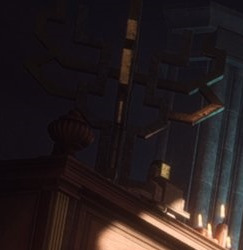
This item on the top of one of the shelves caught my eye. I can't place it atm but haven't we seen this shape before?

This room can only be Neve's. :) in the bottom left is a stand with a different leg on it, the same as one of the ones shown in her artbook concept art. there is serpent imagery. I think diamond shapes and pointy objects like the wall-lights are part of the visual language design of Tevinter. the hanging lanterns look magical, a common thing in Tevinter. the rug is pretty and incorporates her turquiosey color palette. on her desk there is a turquoise pot (teapot?) - if you look closely, its coloring and the swirling designs on it are very similar to Neve's teacup here. :) there are various teapots and decanter-type things around the place that she could use for coffee.
it's smart room design, the big ceiling-high windows give the room the impression of a workplace office, like something out of a crime procedural.
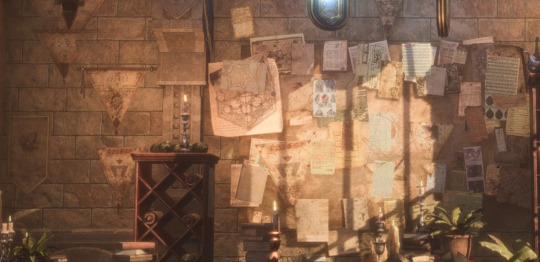
Neve's casework wall. wanted posters/mugshots/suspect/missing person (they could be any of these) pictures, lots of notes, papers that look like they could be maps, strings linking together different papers in a clues-board like this meme, papers that it looks like Neve has annotated in red ink while studying them (circling and underlining things). a nice touch is that one or two of the papers are drawings of snowflakes, fitting for an ice mage. :)
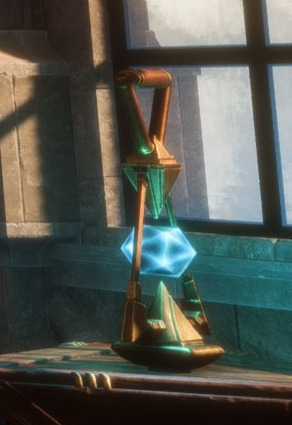
I'm curious, what is this and what is it for? Bellara has one of these in her room as well, as does Lucanis (see Part 2).
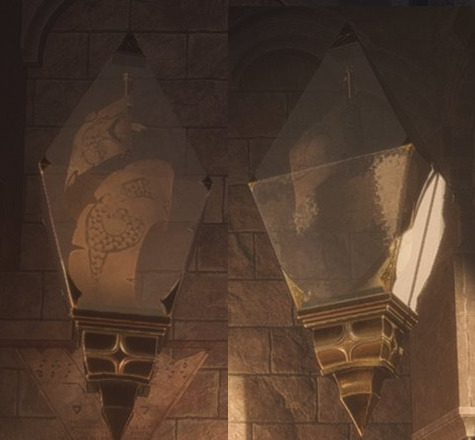
these hanging objects are also interesting. they look like glass cases containing pieces of parchment on which a snake is drawn.

This room can only be Bellara's. :) it's filled with floating ancient elven magic-tech triangles and in the middle it shows the detached head thing from her artbook concept art. (he looks like if you activated him with the blue crystal or something that he could talk..). the room has a workshop vibe; she has a workbench and a stool, different instruments and gismos, and there's an array of artifacts on the shelves. the orange wall hanging on the right is triangular, flanked by two arrows in the nets and contains the skull of a deer/halla or similar animal. this must represent the Veil Jumpers given that many of them use archery, the triangles and the fact that their faction logo is a deerlike skull. it's a nice touch that even the structure of some of Bellara's furniture, like the sidetable on which the head rests, are triangular in design.
All the picture frames everywhere - are those mirrors? could they have something to do with investigating eluvians, or the network?
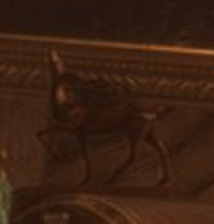
this looks like this halla statuette asset from DA:I. :) there's one of these in Taash's room too.
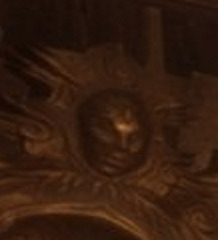
the ancient elven face motif, like on Solas' Trespasser armor and the Temple of Mythal Sentinels' armor.
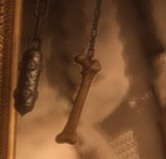
hanging bone hh?
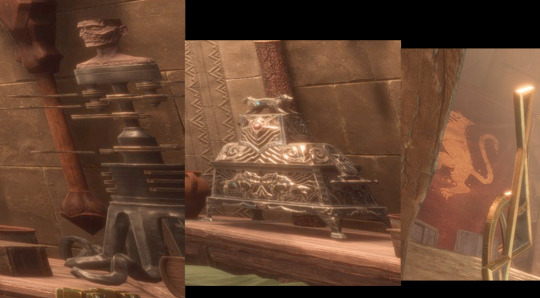
Left: what is this contraption? the ear is human Center: very ornate box. what's in here? maybe the animals on the top of the lid are stylized mabari? Right: Fereldan mabari banner.

Left: this pattern of walls and the triangle pattern on them is a feature of ancient elven architecture. Right: the way the walls (behind the frames) are designed here, it makes it look like pipes. Bottom: curious that we cannot see the ceiling.. :)
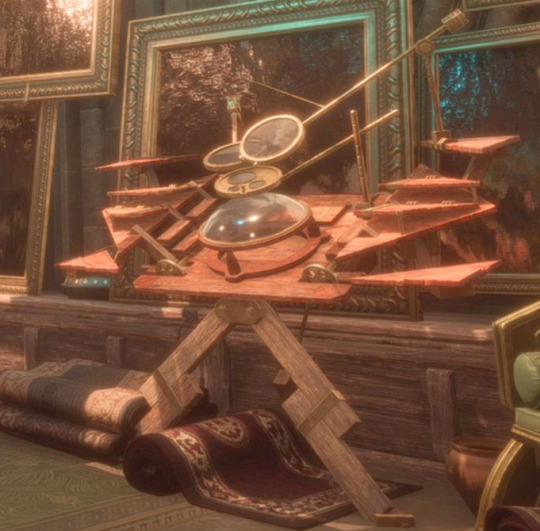
This looks like a sort of magnifying glass or microscope-type thing that would allow her to closely examine things she finds.
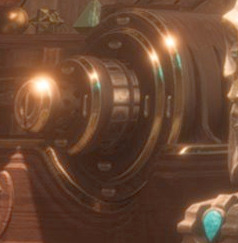
What does this do? :D


This (left), along with the head, feels like a focal point in her room. this hanging thing almost looks like a model of a planet or solar system - a planet in the middle, a ring of asteroids or something around it, smaller orbs around the place like moons. we've seen part of something similar before, in the ancient elven ruins in Arlathan Forest in the screenshot on the right. compare these bits; the rings, the paired triangles.

looking at the wider structure of the thing in Bellara's room, it also reminds an awful lot of this place (whatever it is), which even has the ring of rocks going around it.

feels important. :D
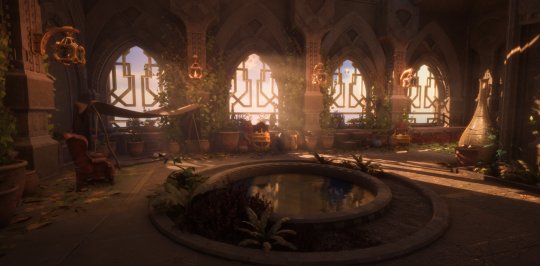
I feel like this is Harding's room. :) it's pretty and cute, a nice rustic space (suits her). the simple bedroll under a cloth canopy propped up with some sticks has the vibe of something a shepherd and scout might rig up to rest in when out in the wilds. the pond / water feature transforms it into an outdoorsy, nature-y space, as do the leaf-strewn floors and the plants growing up the walls. there's vegetation everywhere - potted plants and some areas which look like raised planting beds, basically little indoor gardens. this includes windowboxes, flowers and even mushrooms (I know that's fungi. yk what I mean hh). this makes so much sense for Harding - we know she loves nature and plants, and Ali Hillis mentioned that Harding also raises plants. I wonder if as the game progresses, she will grow more plants and the ones she has already will grow some more? like maybe she'll finish planting up the area around the pond the whole way round? and I wonder if her lil pond has fish? that would be so neat. please can I buy some beautiful koi for Harding to put in her pond to raise? also I wonder if any of the things she grows are edible? like imagine Bellara and Lucanis cooking with e.g. salad greens grown and raised here by Ms Harding :D and/or healing herbs we could use in the field?
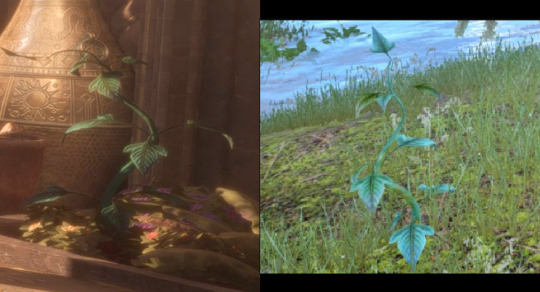
this plant for example resembles the model for elfroot in DA:I!

I think maybe this is Taash's room. first off, near the middle of the room it looks like a makeshift weights bench, and we know that Taash is a gym bro. the hanging rings nearby that remind me of these. even the 'horizontal ladders' on the ceiling look like you could use them as monkeybars - if you look on the left, there are even ladders in the form of rings protruding from the wall that you could use to climb up there to access them.
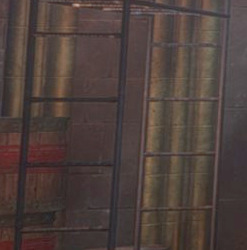
even these frame things look like they could be used for some kind of physical workout/climbing situation.
on the table to the left it looks like piles of big coins, fitting for a Lord of Fortune. elsewhere in the room behind the weights bench it looks like there might be some gold bars. in the background is a hammer leaned against a crate.
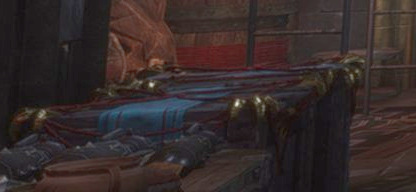
this crate has her color scheme - the tealy hue, gold pieces and red ropes.
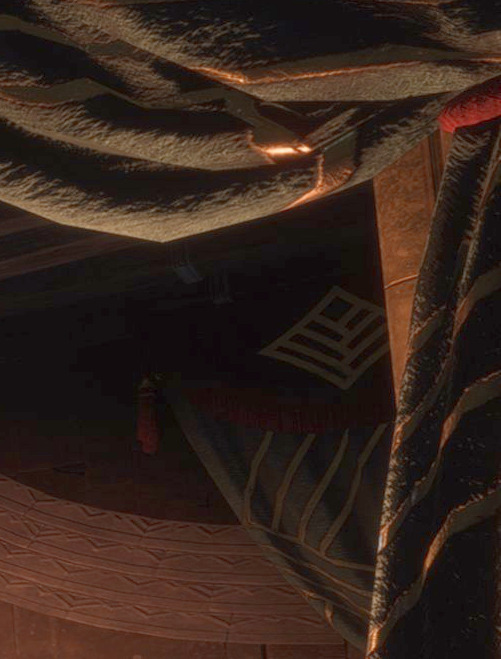
a Qunari symbol, in drapery that has her color palette, the teal with the red ropes. btw, comparing this and its location to the new screenshot of Taash, I think that this banner is the thing in the background that I was talking about here (the "something blue-green"):
in the background to the right is something blue-green with what looks like red rope hanging off it. a belonging of Taash’s? maybe this shot is from a quieter moment, somewhere in the Lighthouse, maybe her space? if you look here (Arlathan, the ruins are ancient elven), it has the same sort of repeating zigzag patterns on the same sort of arch-like curves as here. it makes me think that this shot is set in a room with ancient elven architecture. (and the Lighthouse was Solas’, so it would have ancient elven design).
If you look at the banner with a wider crop you can even see the "arch-like curves" with the zigzag patterns that she's standing in front of in the new screenshot. this area has fire to the left of the arch, which would cast the warm firey glow you can see from stage-left in the new Taash screenshot. so it looks like in the new Taash screenshot she was standing somewhere around here:
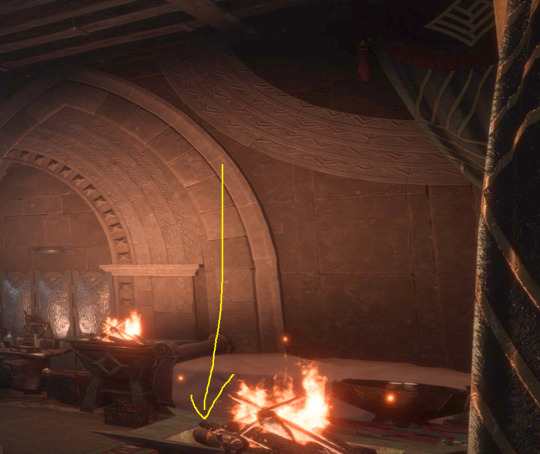
And that my guess of the setting of the new Taash screenshot was correct. :D
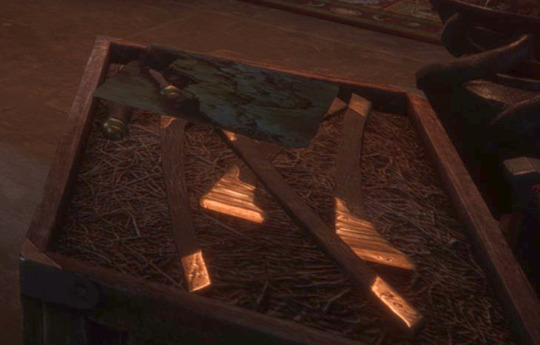
crate of some kind of weaponry or bones, including a map with a knife I imagine you'd use to mark spots on it with. :) piratey vibe.
clever room design btw, it has the vibe of belowdecks/the bowels of a ship.
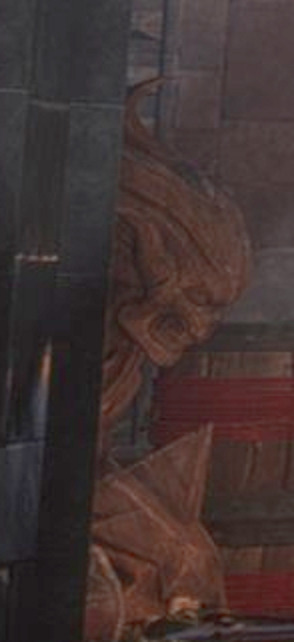
horned statue or carving, like an ogre.
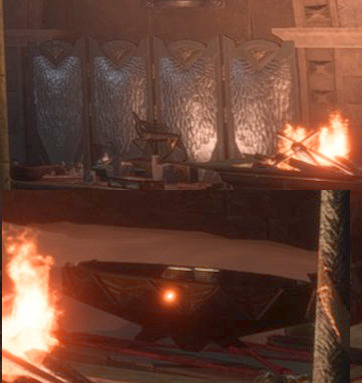
Top: the silver shield-like things on the wall have the same sort of scale-mail appearance as Taash's field armor. Bottom: this thing reminds me of a boat in shape. like a small fishing boat or something.

I wonder why Taash has a Grey Warden shield and an eluvian in her room? maybe the shield is just general decor (like the Fereldan banner in Bellara's room? unless Bellara is from Ferelden??). maybe the eluvian ties into why she apparently has some involvement and a strong interest in a main story mission set in the far reaches of Arlathan Forest, as described by Corinne Busche during the second Discord Q&A? -
"I was out in Arlathan, actually doing, on my way to do a main story mission, and I get to the far reaches of Arlathan Forest, and I already knew that Taash wanted to help me with some of the challenges of that arc. Well, Taash is right there waiting for me, so I actually chose to instead like, ah, Taash seems impatient, I’m gonna actually jump on that story arc right now instead of what I intended to do"
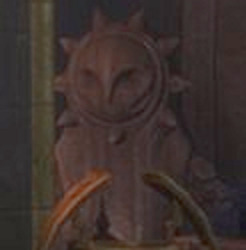
And what is this? Looks like a sun or an owl. ^^
I ran out of image allowance on this post so I'll put the rest in another post!
[Link to Part 2]
#dragon age: the veilguard#dragon age the veilguard spoilers#dragon age: dreadwolf#dragon age 4#the dread wolf rises#da4#dragon age#bioware#video games#long post#longpost#solas
126 notes
·
View notes
Text

"The God of the Macrocosm and the God of the Microcosm act upon each other, and both are essentially one, for there is only one God and one law and one Nature, through which wisdom becomes manifest."
— Paracelsus, De Fundamento Sapientiae
Seal of Solomon ✡︎
Talon Abraxas
Hexagram, or the six pointed star is a common symbol and popular by the name of Megan David or the Star of David. It is a considered to be a Jewish symbol and can be seen in the Flag of Israel. History tells that in Judaism, the symbol first appeared in a Synagogue of Israel in 3rd or 4th century, where it was purely a decoration motif. Few other synagogues of same period bear a Pentagram (5 pointed star). More meaningful usage appears in 11th century to decorate manuscripts. Much later, this symbol became popular and was associated with Judaism officially. However, the Hexagram was used in many other parts of world much before it became popular in Israel.
The Origin
Hexagram is a generic shape. It is difficult to ascertain the origin, given the limited information in this regards. We can only study the oldest usage and appearance of the symbol. In my earlier article, I discussed about Swastika, which appears in various religions and communities with different names. Similarly, Hexagram also appears almost everywhere and there is a possibility that the symbol was created by different people with no connection to each other.
The Hindu Theory In Hinduism, the Hexagram is more commonly known as Shatkon or Satkona (Shat = six, Kona = corner/angle). It is the union of Shiv (Male) and Shakti (Female). Here, Shiva, or the Purusha is represented by symbol “ᐱ”, which is a symbolic representation of male organ. Shakti, or Prakriti is represented by symbol “ᐯ”, which denotes the female womb. They are both combined to form “✡”. This is called Shanmukha, which represents “Origin”, or the formation of life. Shanmukha literally means Six faced. Hindu deity Kartikeya, Shiv and Shakti’s progeny, is also represented with six faces. Hexagram is also used in Yantras in Hindu religion. Yantras are used in rituals.
Anahat Chakra or Padam Sundra
The Anahat Chakra or Anahatpuri is one of the seven chakras of Yoga, which is associated with well being, emotions, love and devotion. It contains a lotus flower with twelve petals and an encircled hexagram.
Hexagram in Jainism & Buddhism
Vajrayogini, the highest yoga-tantra Ishta-Devi is practiced to avoid ordinary death and reaching higher spiritual paths. She is a high spiritual figure in Tibet and other areas where Buddhism is practiced. In Tibetan Mandalas, she is drawn in a Hexagram. Some old versions of Tibetan Bardo Tholo (Book of funerary texts) contains Hexagram with Swastika. In Tibetan, it is called the “origin of phenomenon” (chos-kyi ‘byung-gnas). Hexagram is also seen at many places in Jain and Buddhist texts.
Judaism and Christianity
Judaism considers Hexagram as Star of David. While the symbol was used in Jew and Christian texts from centuries, the official use of the Hexagram to represent the Jewish community started from First Zionist Congress in 1897. Soon, it was being used in everything related to Judaism. It became popular to an extend that the flag proposed in first congress later became the official flag of Israel (with minor modifications).
Hexagram can be seen in many churches, where it is part of the architectural patterns. However, at few places, Jesus Christ is depicted in the Hexagram. Star-of-David
One important thing in case of “Star of David”, which usually goes unnoticed is that it is not 2 triangles overlapped. Megan David is actually two triangles interlocked. In almost all other cases, it is the overlapped triangles.
Hexagram in Islam
If you have been to Saudi Arabia, you would know the difference between a Pentagram and a Hexagram. A 5-pointed star has been widely accepted by modern Islamic fundamentalist and they discourage the use of the 6-pointed star. However, this move is more political than religious. Islam considers Moses as one of its prophets and his name appears more than any other prophet in the holy texts. Judaism, Christianity and Islam are all Abrahamic religions and share common roots and beliefs. In South Asia, the Hexagram can be seen on almost all ancient Islamic structures, from tombs to mosques.
In examples below, we have the name “Allah” written inside an Hexagram. It can be seen in the Mosque of Makhdoom Sabzwari in Mayfair Garden near Hauz Khas, New Delhi. The wall on right side is from an unknown tomb in Lado Sarai area of Delhi, where Hexagrams and regular hexagons are used as decorative geometric patterns.
Shinto (Japanese)
Hexagram is a common symbol in Shinto. There, it is known as Kagome Crest and can be found in almost all Shinto temples, dating back to 5th century BC.
28 notes
·
View notes
Text
Golden Ratio

The Mona Lisa is a famous painting by Leonardo da Vinci (1452–1519), a Renaissance artist and scientist.
The painting depicts a woman with a mysterious smile and a landscape background. One of the reasons why the Mona Lisa is so admired is because of its use of the golden ratio, a mathematical proportion that is considered to be aesthetically pleasing and harmonious.
The golden ratio, also known as the divine proportion, is a ratio of approximately 1.618 that can be found in nature, art, architecture, music, and geometry.
It is expressed by the Greek letter phi (Φ) and can be derived from the Fibonacci sequence.
The golden ratio can be seen in the Mona Lisa in several ways. For example, if a rectangle bounds the face and this rectangle is divided by drawing a line across her eyes, it creates another golden rectangle.
The result is that the ratio of the length of Mona Lisa’s head to her eyes is also that of the golden ratio.
Another example is that if a triangle is drawn from her chin to her eyes and to the top of her head, it forms a golden triangle, which has angles of 36°, 72°, and 72°.
The golden triangle can also be found in other parts of the painting, such as the shape of her nose and mouth.
Da Vinci was fascinated by the golden ratio and its connection to nature, art, and geometry. He illustrated a book called "The Divine Proportion" by Luca Pacioli, a mathematician and friend of Da Vinci.
The book explores the mathematical and artistic properties of the golden ratio and its applications in various fields. Da Vinci also used the golden ratio in some of his other works, such as The Last Supper and The Vitruvian Man.
The use of the golden ratio in the Mona Lisa shows Da Vinci’s skill and knowledge as an artist and a scientist.
He was able to create a realistic and harmonious portrait that captures the beauty and mystery of the human face. The Mona Lisa is not only a masterpiece of art but also a testament to the power and elegance of mathematics.
#Mona Lisa#Leonardo da Vinci#Renaissance#golden ratio#divine proportion#1.618#mathematical proportion#phi#Fibonacci sequence#Luca Pacioli#The Divine Proportion#The Last Supper#The Vitruvian Man#mathematics#masterpiece#art#artworks#painting#art history#paintings
33 notes
·
View notes
Text
Reclaiming Leroux's Original Vision | part 1/?
Despite passionate pleas from dedicated Phans who have kept Leroux's original text alive through decades of discussion, fan works, etc., production companies continually choose marketable romance over authentic adaptation, perpetually ignoring the faithful rendition fans have been clamoring for. ***For the purpose of this discussion, I am excluding the 1925 silent film adaptation, which stands apart as perhaps the most faithful adaptation of Gaston Leroux's novel, and focusing on the grievances that Phans commonly express regarding other adaptations across various media.***
From the 1984 BANGER musical that prioritized spectacle over substance, to the 1990 miniseries that gave us a subdued, sympathetic Erik, to the 2004 film that turned Erik into a brooding, misunderstood hottie with convenient scarring, to various others, each attempt seems to misunderstand that fans don't want a dumbed down love triangle (Though it should be said that we do adore these adaptations for what they are-- Webber's music is undeniably beautiful, Dance's performance is genuinely moving, Chaney's makeup & dedication remains iconic, and not to mention the 2004 film is visually stunning)—we want the brilliant, morally complex, historically textured, genuinely disturbing masterpiece that Leroux wrote.
The recurring sins remain consistent:
The bastardization of Erik's character. Erik's horrific appearance isn't just physical description—it fundamentally shapes his entire psychology and justifies his isolation from humanity, making him simultaneously monstrous and tragic; when adaptations give us a handsome phantom with decorative/minimal scarring, they erase the lifetime of rejection and dehumanization that forged his broken psyche and twisted worldview. Erik is SYMPATHETIC.
The complete erasure of the Persian. Removing him not only gets rid of MAJOR PLOT DETAILS, but it also removes Erik's only genuine human connection and moral counterbalance, eliminating the character who humanizes Erik through their shared history while also serving as the crucial voice of reason who condemns his actions.
Christine's character being reduced to a silly little ingénue forced to choose between two love interests instead of a determined young woman making impossible choices while processing immense trauma and grief, despite the fact that she's a victim of severe emotional manipulation and abuse—which isn't romantic, it's horrific.
Raoul being flattened into a one-dimensional pretty boy when his character is much more complicated than that. He's driven by emotional insecurity, naivety, and a sense of duty. He's young, new into society, and wanting to prove himself. He wants to protect Christine. He's wants to understand the connection Christine shares with this Erik.
Completely abandoning Leroux's "this is a journalist investigating real events" framework that makes the original novel so unique and unsettling.
Philippe de Chagny mysteriously vanishing from adaptations despite his "mysterious" drowning being a major plot point.
The opera house itself losing its character as a place of history, secrets, and genuine architectural strangeness.
Should an accurate adaptation of Gaston Leroux's "The Phantom of the Opera" be considered, I believe it would seek to rectify these recurring issues. It should breathe new life into both dimensions of the original novel: the meticulous journalistic investigation and the heartbreaking tale buried beneath the Paris Opera House. Leroux himself should take center stage at times—chasing leads through dusty archives, interviewing reluctant witnesses, and piecing together fragments of evidence about a masked man who once terrorized the opera. These investigative sequences would illuminate how Leroux blended documented facts (the underground lake, the mysterious accidents, the architectural oddities of the Opera Garnier) with his novelist's imagination, creating a compelling framework that constantly questions where reality ends and fiction begins.
Parallel to this investigation runs Erik's devastating story—a tale of profound isolation, artistic genius, and doomed love that explores deeply human questions about appearance, acceptance, and redemption. By returning to Leroux's original character descriptions and historical inspirations—such as the real-life soprano Christine Nilsson who influenced the creation of Christine Daaé—this adaptation would strip away decades of reinterpretation to present these characters as they were originally conceived.
Through this dual narrative structure, viewers would gain unprecedented insight into what Leroux was trying to teach us about societal cruelty, the transcendent power of music, and the complex nature of love in its various forms—familial, protective, passionate, and obsessive. This dream project imagines bringing the authentic literary Phantom to life as Leroux intended, where the line between factual investigation and gothic romance becomes as murky as the waters of the underground lake itself.
I intend to explore what a truly faithful adaptation might look like by suggesting ideal casting choices, highlighting scenes from Leroux’s novel that deserve proper screen treatment, various references that I would love to see, and debating whether a tv series or film would serve the complex narrative and gothic atmosphere of the original work. My goal is to envision an adaptation that honors the psychological horror and the rich historical context that made Leroux’s novel a timeless classic.
#phantom of the opera#poto#the phantom of the opera#gaston leroux#poto leroux#leroux christine#leroux erik#leroux raoul#phantom of the opera 1925#the phantom of the opera 1925#poto 1925#charles dance phantom#phantom broadway#phantom west end#phantomoftheopera#poto west end#poto 1990#1990 poto#phantom of the opera 1990
35 notes
·
View notes
Text
As part of claiming "in Bill's home dimension every shape is a separate gender" I'd like to imagine there are like, different gender roles for each shape. And I'm not talking about borrowing Flatland's "here's the careers & stereotypes available to each shape according to our hierarchy—" I'm talking about inventing genders. But that's a lot of work for something that would have ZERO relevance in the fic, so I'm not gonna do that.
However, thinking about it did make something else occur to me:
you know how Bill keeps slapping triangles on things, handing over triangle-shaped blueprints, making triangle-shaped architecture, it's triangles triangles triangles left right and center whenever he's around
if I'm calling triangle his gender, then is that like, the equivalent of that lady who slaps ♀ symbols and "GIRL POWER" stickers all over everything she owns
is he just really really hyped about his own gender
#(good for him. good for him)#(and may we all experience such intense gender euphoria)#about my writing#bill goldilocks cipher#shape gender
137 notes
·
View notes
Text
Translated from Russian, possible errors in translation
————————————————————————-
Alias: Dzeshiko
Name:???
Age:25
Height: 173
Type: human.
Abilities: defensive dash, happens fast. In the face of spiritual protection.

Character/ personality: it is very important for her to rely on inner feelings and use them as the main adviser in all situations. Helping others really warms her soul if she considers her future help without consequences.
Avoids conflicts in any way, is ready to compromise. Her sword is only for defense, she has no original motive to kill anyone, except to protect a decrepit herbalist. Ambivalent, monogamous.
~~~~~~~~~~~~~~~~~~~~~~~~~~~~
Abilities: none
Weapon: two-handed sword
Two-handed sword: • Pointed ends resembling the shape of a triangle- as in architecture, to create stability and balance, provide support for architectural elements and create a sense of visual harmony.
Rectangular or square parts- as in architecture, symbolize balance, stability and order
•Two intertwining oval shapes of the "Solomon" knot - as a symbol of love and unity... A red handkerchief as a symbol of compassion, hope and rebirth. (actually, this is a reference to the Archangel Michael)

Appearance of mk 9:
The body is partially covered with a leather jacket, at a lighter pace for using a two-handed sword. Gray/silver color, as a symbol of purity, wisdom and joy. It can represent a cross between the extremes of black and white, symbolizing the path of faith on which believers are in the process of moving from darkness to light, from sin to righteousness. It has golden patterns. A gray vest that covers a white shirt, as an unwillingness to show his gentle nature, while maintaining some stoicism. The long neckline and exposed thigh are a reminder of the right to choose, and that she is not a saint, and has the right to small whims as a view of this area.
Bangs covering the left eye, as well as not wanting to see negative aspects in your life or environment. Two pigtails on the sides of the temples for convenience, so as not to stick and scratch the nose.

A Mantis is depicted on his forearms.

Appearance of mk10:

Her hair is gathered in pigtails. The whole body is covered, except for the head. It may seem that the costume has many elements in terms of what is being worn. But no, the scheme is as simple as a leather coat.
_________________________________________________________
Pre-history: before the canonical events (20 years)
Being in an active search for answers to deep questions about the meaning of life. And visiting various antique, spiritual, or magical shops, in search of ambiguous literature. They lead her to a series of unusual circumstances.
Helping an old man, who turns out to be Shang Tsung, leads to imprisonment. In the course of a calm and indifferent attitude towards his life, and respect for his elders, regardless of the circumstances, the girl learns about his plans. Shang Tsung's plans do not suit her, and she manages to escape the terrible fate of her own moral nature.
It was not difficult for her to realize herself in the new world. The first aid to a merchant who was attacked by robbers led her not only to good rumors about her, but also to the acquisition of a sword during the battle.

The plot of Mk 9
: Time passed, and at the tournament, she met Shang Tsung again, ready to play another unsuccessful game. The first person she met was Nighteyes, who had heard a lot about Peacemaker. After completing the tournament, Dzeshiko met Liu Kang, Kung Lao and Raiden.
After learning about Raiden's teachings, Dzeshiko attached great importance to his words, saying bluntly that his judgments could be Wrong

In subsequent decisions by Shang Tsung and Shao Kahn to hold a second tournament, at the end of which Liu Kang wins Shao Kahn.

This does not change the whole bitterness of Shao Kahn, leading to the canonical ending, with the exception of the great sacrifices among the original characters. So saving Nighteyes from Sindel leads to saving the others, Kitana, Kung Lao, and the soldiers.
In the end, Liu Kang and Kung Lao defeat Shao Kahn. During this, Jieshiko helps Raiden recover from his injuries, distracting him from his thoughts and hinting at a favorable outcome.

The plot of MK 10: (Reference: The Elder Gods gave the go-ahead, rewarding the girl with Longevity, but not immortality. She may die in the course of serious physical injury)
By this time, Raiden and Jieshiko, to their own surprise, had become close, both spiritually and physically.

Upon entering the union, a son is born, named Nobu
It was not possible to keep this union a secret, due to Shinok's witty and sarcastic joke during the first attempt to defile Qin Sei. Undoubtedly, the witnesses reacted to this with understanding, both his disciples and his Brother keep it a secret.
At the end of the canonical plot, if it was possible to stop Shinoka based on his future defeat, the girl left decisions for the elder gods, considering she had no right to control the fate of even the former elder god.
This condescension and excessive kindness left her with only one right hand.
_________________________________________________________
The plot of Mk 11: Before the paradox, Dzeshiko was 56 years old at that time. Relations with Raiden deteriorated due to his bitterness and extremely radical measures to protect the earthly kingdom. At that time, Kronika was trying to manipulate the situation and play on emotions.
As a result, she fails because of the girl's high moral principles. Thinking about the younger version, which is so inexperienced in judgments and views, ready to follow the "true one", he wants to win her over to his side. The time paradox that Kronika caused led Dzeshiko to the future, after the girl happened to be awarded a sword that was still somewhat heavy in the region of 20 kg, making her even more slow, constrained and not decisive.
Meeting her future child, being at the same age, shocked her, and even more shocked when she found out who he was from.
Of course, she was quite satisfied with all the news, and found them a more than logical answer.
The endings can be endless, depending on the girl's spoken words and actions, which lead to completely different events. Starting with defeating Kronika, replacing her as the keeper of the hourglass, and ending with her death as a young version, sacrificing herself to save one of her allies.
(Fact: the younger person was not shy about her name)
Mk1: the original / Exodus Titan
•Original: as one of the consequences, passing exams with a minimum score would encourage you to go into some depths. Leaving behind social status, a well-paying job, and all the possible benefits of urban life, like 24-hour shopping and the Internet. With the accumulated money, have a small hectare of land, a bed of cucumbers, and chickens. She works in the cafeteria with a cheerful grandmother, which gives her a choice of two hardworking guys. And they are delicious in the form of fruits, vegetables, meat, they throw it on.. In the course of spiritual enlightenment and continued sports. Not by a miracle, but as a result of situations, an invitation to study under the guidance of Liu Kang falls. A romantic relationship with Raiden is also developing. In both the original and other outcomes, the Left Arm is either crippled or stripped of it. So, distracting Shao Kahn's attention from Raiden, he loses his left arm + a crack in his ribs, from 3 to 5 of the true rib.... Since the blow was made with a hammer.
Keeper of the Hourglass: Leads to a smooth and moderate life for all canonical characters, and a world of free choice that leads people to the same cruelty, indifference, and dishonor. (Does not have a tournament)
_____________________________
#mortal kombat#mortal kombat oc#арт#мортал комбат#mk11#mk9 fanart#mk10#lord raiden#raiden#oc art#oc canon#mk oc#mk11 oc
12 notes
·
View notes
Text
i got extremely pissed off for life is strange reasons so i bought my veilguard/taash ring to make myself feel better
here it is!

i've said this before but i'm not a tattoo person HOWEVER i do like to wear tribute jewelry for stuff i like! this is the ring i picked for veilguard/taash. obviously the shape looks a lot like the logo for the veilguard, which is what caught my eye originally. this is kind of the same reason it's about taash: dragony vibes, especially with the tooth-like shapes in the middle. the negative space also looks like the scales on taash's starter armour. the triangles remind me of the arlathan forest, in part because triangles represent the fade but also because the trefoil is reminiscent of the architecture of the ruins there- so it's kind of about muireann and bellara too, making the theme of 3 even more significant!
#blah blah blah yeah the game isn't out but i was having a CRISIS leave me alone#also the nice thing about jewelry is it isn't permanent and if for some reason i hate veilguard it can just be a cool ring that i have#i was considering getting the gold because of taash but it's SO yellow i couldn't do it
13 notes
·
View notes
Text
A Prowl who likes doing art
It’s not anything fancy, but it calms him to go through a tutorial and copy the movements and master the technical elements to make it look good. The calculations for the angle and slope of each stroke of pencil or brush is easy but not boring and the there’s a subtle thrill in cycling through different art styles and techniques that require slight tweaks in thinking to accomplish
And for a while it works for him, drawing in his pass times to cycle down from a long work day
Until the war rolls around and Praxus is bombed
He doesn’t pick up a stylus in a while. He copes with work and more work until he’s too busy to think about grief, the future, or the past
It isn’t until after the war, where there’s no new big battle to distract him
It overwhelms him for a while and he develops paranoia, stuck in the midsts of a battle that has long passed
Optimus advises him to go into therapy
It’s Rung, obviously. The first few sessions garner little, but eventually, he asks if Prowl ever had and hobbies
Prowl’s instinct is to say no. But he thinks, and remembers when he used to do art. All kinds of art. He confesses this with reluctance. Rung simply smiled and asked about what he did.
They talk about art and they end the session with Rung recommending that Prowl start doing art again
Prowl does, eventually. He gets a blank datapad and a good stylus.
He tried doing it the same way he did before— scrolling through a library of tutorials and speedpaints, picking one, and following it to the decimal. But it doesn’t give the same satisfaction as before.
He starts getting frustrated. Deleting and undoing and adjusting individual lines and strokes until he closed the program and threw the stylus.
It takes a long time before he tries again. This time with a different approach. He selects a different video this time, one discussing… other things while they constructed their art piece. In the video, they discuss expression and putting yourself into your work. It wasn’t all about making it look pretty or just doing it one way.
It takes even longer for Prowl to deviate from his usual copy-paste style. Line start extending purposefully beyond where they’re meant to stop. Still-lifes look like architectural pieces with numbers sketched above the straight lines. Prowl develops a geometric artstyle, purely in black, white, and red. His values are represented in cross-hatching and organic forms are broken down into comprehensible shapes of triangles, hexagons, and rhombuses
Prowl starts enjoying art again
6 notes
·
View notes
Text
What Makes Someone an Artist? A Personal Reflection on Creativity and Identity

That is, indeed, a tricky question for me. Why? Well…
As Google says:
“An artist is a person engaged in an activity related to creating art, practicing the arts, or demonstrating an art.”
Creating art, huh? First of all, let’s determine what art is.
“A vehicle for the expression or communication of emotions and ideas, a means for exploring and appreciating formal elements for their own sake, and as mimesis or representation.”
A vehicle for the expression. Interesting, right? Expressing yourself is an essential part of art and everyday life if you wish. Here’s a little bit of my story: I have always loved photography. I started taking my first “artistic” shots back in 2016 when I was in middle school. My way of expressing myself — then and now — is about seeing ordinary things from a different perspective (I’m going back to photography talks and articles soon! So I hope you’ll be able to see what I mean). I believe I can show people my vision and how I see things — that is communication and showing emotions with your art.
Formal elements mean valuing things like color, shape, and composition only because they are visually beautiful, without the need to represent something real. They refer to the fundamental building blocks of art (line, shape, color, texture, balance, etc. While representation means realism, like a realistic portrait or landscape, with a certain meaning. And I’ve realized I love both. I have photos of objects without any specific meaning, only capturing them because they look beautiful, like a broccoli on a fork (yes, that’s the real photo I’ve taken). I love to put meaning into what seems like a simple photo, but in reality, it could mean a lot. I love telling stories, whether the ones I’ve imagined or experienced, through art. Photography was my first love in the world of art.

Now that we kind of understand what art is, let’s see who the artist is? An artist is someone who creates, practices and demonstrates art. This is not always visual arts only, such as painting, drawing, photography, and architecture. It’s also music, dance, theater, literature, film, digital art, and even culinary or performance art. Any type of expressing yourself telling your story.
I graduated from university with a Bachelor’s Degree in graphic design, but my studies weren’t limited to design-related subjects. We also practiced drawing portraits, objects, and fruits on a piece of clothing, as well as simple geometric forms like circles and triangles, to understand the fundamental shapes the world around us is made from. It was fun and all, until I heard that some teachers don’t accept anime, for example, as a “real” art. I didn’t pay much attention then. But now, since I’m diving more into the art community, I can hear more people complain about such a thing (or is it just my recommendations?). And this is disturbing. If you love drawing anime characters, or anything else, go for it! It’s your way of expressing yourself. It can be your style or simply the thing you love drawing the most. And there’s nothing wrong with it! I used to draw ponies and human versions of them a lot, but even then, I put meaning into my art. Sometimes not, tho. Simply copying a scene from a movie was perfectly fine for me. No meaning, pure fun.

What’s the point of my little stories? It’s simple — I never thought about myself as an artist. Some people would call me it and I thought they were just being nice or polite. I was primarily drawing My Little Pony characters, then tried doing portraits of celebrities, then I dived into logo and brand identity creation. And now? I’m not sure what I want to draw. I tried creating my sticker pack and ended up creating several sketches, one of which turned out to be a logo for my Substack.

I tried my best to continue being a “true artist”, forcing myself to draw again, so I ended up burnt out quickly. I’ve learned that I still want to create. I want to draw sometimes, if I have inspiration, take photos occasionally, but only when I feel like it. And that is okay! Art isn’t about forcing yourself. It’s about enjoying the process. Maybe I’ll never settle with one thing. And that is also okay! Now I found myself writing my little blog here, telling my story and, maybe, it’ll help someone understand — you love creating? You’re an artist! You can’t keep up with consistency and create only when you really want to? You’re an artist! You take one photo per month but with a deep meaning? You’re an artist! No meaning, just beauty? Still an artist!
Don’t listen to anyone but yourself and your true desires.

#creative identity#am i an artist#self discovery#artist struggle#being an artist#drawing#art thoughts#personal essay#tumblr journal#self expression#tumblr artist#artists on tumblr
4 notes
·
View notes
Text

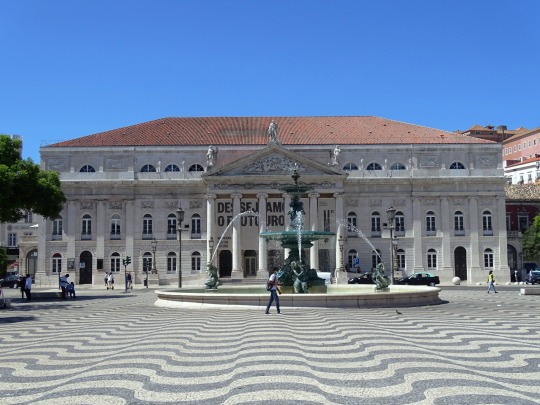

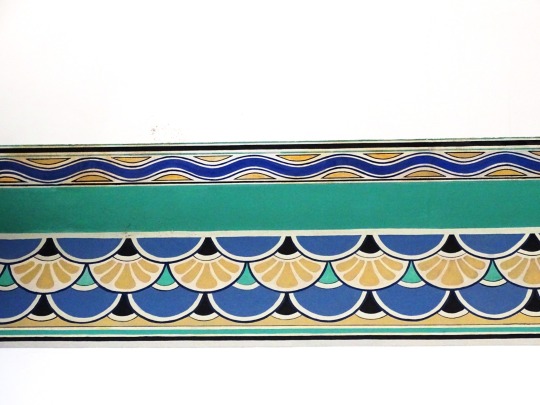
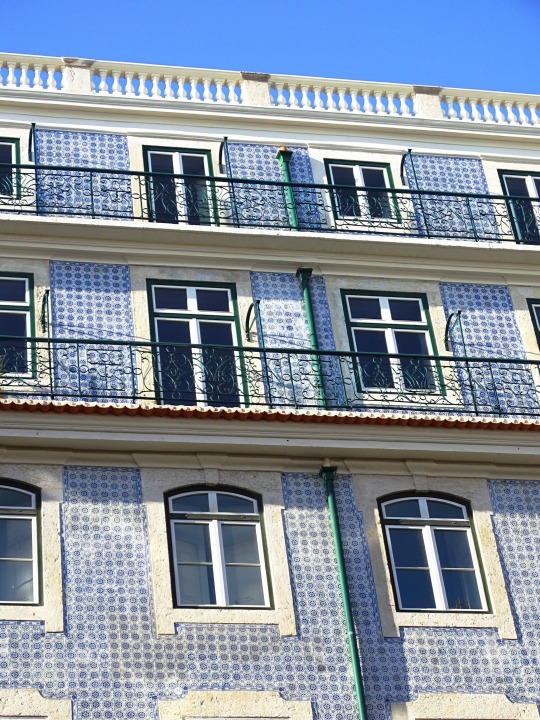
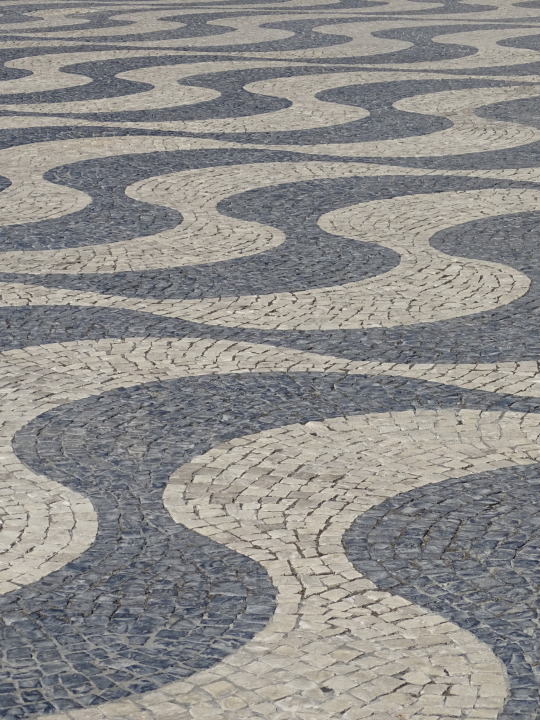
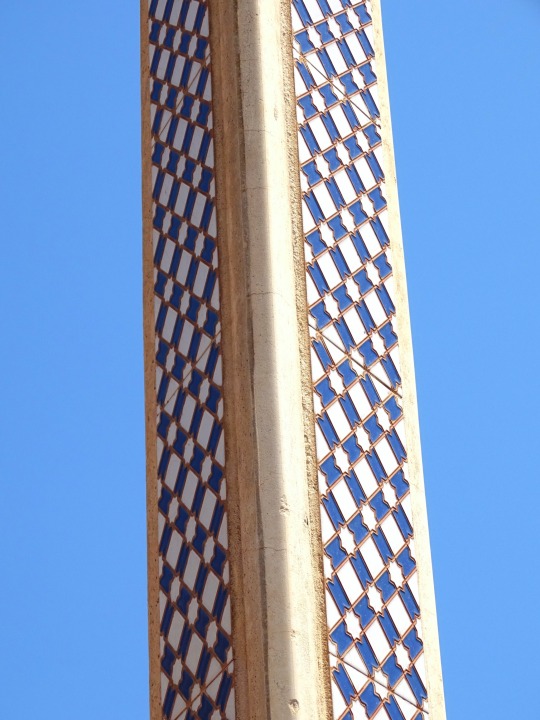
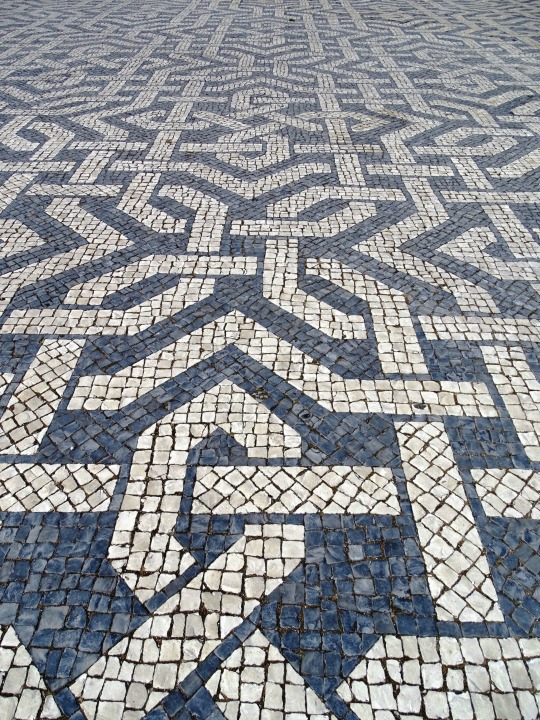
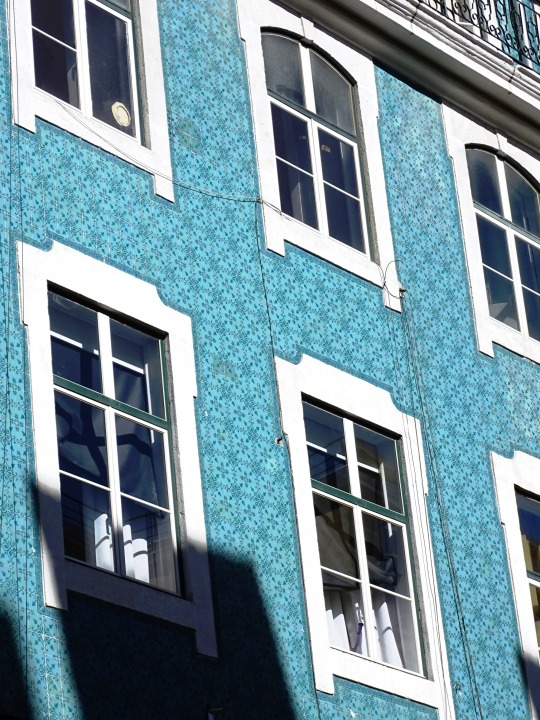



World Tessellation Day
World Tessellation Day is celebrated on June 17 every year. Tessellation is the art of tiling a plane using geometric shapes in the form of tiles that require specific measurements. This holiday is dedicated to appreciating the fascinating art of tessellation and honoring these math-inspired visual artists who don’t often get recognized. Today also allows kids to explore this art form as a hobby. While it’s all about creativity, it also requires analytical skills — a great exercise to boost young children’s left and right brain functions. Learn more about the activities you can do to celebrate World Tessellation Day.
History of World Tessellation Day
The origin of the mathematical art of creating patterns, or tessellation, dates back to 4000 B.C. when ancient Sumerians discovered the use of clay tiles as home and temple decorations. It wasn’t too long until the next civilizations quickly adopted tessellation both in art and architecture. The Arabs, Chinese, Egyptians, Japanese, Romans, Persians, and the Moors practiced the use of repeated patterns and geometric designs in their decorative arts. During the classical antiquity period in the 8th century, tessellation became a staple for mosaic tiling decorations using small square blocks called ‘tesserae.’
In the 4th century, one of the most famous tessellation art was made by the Muslim Moors in Grenada, Spain: the Alhambra, an Islamic tessellation artwork composed of countless tiles in geometric positions that were constructed for the residence and court of Mohammed ibn Yusuf Ben Nasr.
In 1619, Johannes Kepler conducted the first official and documented study of tessellation art. In his book “Harmonice Kundi,” he cited regular and semi-regular geometric designs that heavily influenced modern-day tessellation. He’s also the first person to explore and document the hexagonal features of honeycomb and snowflakes.
In 1891, Russian crystallographer Yevgraf Fyodorov explained in a more advanced study that every periodic tiling in a plane has one of 17 isometries. This study marks the first official recognition of tessellation as a mathematical study. This was further explored by Otto Kienzl and Heinrich Heesch in 1964, and Alexei Shubnikov and Nikolain Belov in 1964.
Today, contemporary artists introduced different modern permutations such as surreal landscapes, hand-print patterns, and paper tessellations.
World Tessellation Day timeline
4000 B.C. The Birth of Tessellation
Sumerians introduce tessellation using clay tiles.
4th Century The Most Famous Tessellation Art
Muslim Moors construct the Alhambra as a residence and court for Mohammed ibn Yusuf Ben Nasr.
1619 The First Study of Tessellation Art
Johannes Kepler studies and explains regular and semi-regular geometric designs of tessellation art.
1891 Tessellation as a Mathematical Study
Russian crystallographer Yevgraf Fyodorov introduces tessellation as a form of math.
World Tessellation Day Activities
Create your own tessellation art
Take tessellation courses
Try digital tessellation art
From tiles to paper designs, you can create your own tessellation art design by just using the simplest materials found in your home. Follow D.I.Y. tutorials on YouTube and let your creative juices flow.
Tessellation art classes are ideal for kids who show artistic and creative potential. Enroll your child in your local art school and let them take weekend classes to boost their creativity and analytical capacity.
Spend the day on your laptop and try out the latest tessellation trend: digital art patterns. There are several apps for tessellation making. Be sure to save your final product and upload it on your social media with the hashtag #TessellationDay
5 Interesting Facts About Tessellation
Only three regular polygons tile a plane
A cube in 3.D.
Tessellation is science
Three ways to construct a tessellation
The father of modern tessellation
Only a square, triangle, and hexagon can completely tile a plane.
A Cube in 3.D. is the only regular polyhedron that can independently tessellate.
Science supports that beehive honeycombs, snowflakes, and dried-up mud are all geometric.
The three categories of tessellation construction are translation, reflection, and rotation.
Dutch artist M.C. Escher is considered the father of modern tessellation.
Why We Love World Tessellation Day
It uses both the left and right brain
Tessellation in fashion is trending
It’s an underappreciated art
Tessellation art is a good exercise to be both creative and mathematical. Unlike other art projects, tessellating requires math while executing your creative vision. It’s perfect for kids’ brain development.
The minimalist era of fashion is on the rise. Tessellation designs of repeated patterns on clothes are hip and trendy. It’s a great excuse to wear these designs on World Tessellation Day.
Not many people know about the cultural, scientific, and mathematical history of tessellation. It’s a great way to introduce this to people to honor the artists and scholars who dedicate their lives to this art form.
Source
#Carboneras#Spain#España#summer 2021#original photogrpahy#architecture#cityscape#travel#vacation#tourist attraction#Portugal#Azulejo#Lisbon#façade#detail#Southern Europe#World Tessellation Day#17 June#WorldTessellationDay#original photography#landmark#Lisboa#geometry
2 notes
·
View notes
Text
[gamedev:part 7]
Finished another house asset. I think I will do one more for the scene next week. This house is a mixture of architectural styles I came across. The entrance with the glass blocks is something that I can’t pin down timewise. It seems to be incorporated for a long time, till the early 2000’s. I saw some entrances where they were used to create these curved almost pillar-like shapes. They can look a bit antiquated — especially with these roofs infront. But overall I think they are lovely. Here are some examples of glass block architecture.
The overall shape of the building I can’t tell when it was be built. I see these general shapes of buildings a lot in Cologne. They probably originated in the 50–60’s. But even 90’s housing here seem to conform to this general blocky shape with triangle roofs.
The light colored outer frame on the windows is something I think is more recent on the other hand. I saw several houses that got renovated were they added these color touches. Probably the closest thing we get right now to ornamentation (!^_^)
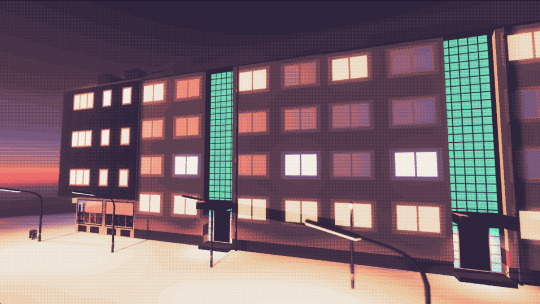
#godot engine#gamedev#indiedev#visual novel#3d game development#screenshot sunday#blender3d#low poly#architectural musings
3 notes
·
View notes